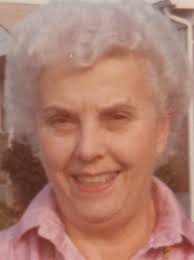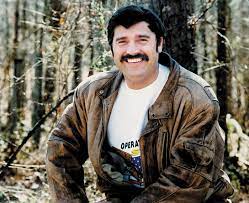The N.C. Murders of Viktor Gunnarsson and Catherine Miller



North Carolina isn’t exactly the place where one would expect to find a man suspected of being involved with the assassination of the Prime Minister of Sweden hiding out. Nor would they expect the man would be murdered as the result of a love triangle and not his troubles abroad. But that’s what happened to Viktor Gunnarsson in December 1993.
On Feb. 28, 1986, Prime Minister Olof Palme was exiting a movie theater on a busy street in Stockholm when he was shot and killed. His wife, Lisbet, sustained injuries during the attack but survived. Because Gunnarsson, known to be a staunch right-wing extremist at the time, was spouting off hate speech about Palme at a nearby bar right before the shooting, Stockholm police detained and questioned him about possible involvement.
Citing lack of evidence, they later dropped charges and released Gunnarsson. Despite claiming innocence, he was not well received in the city after his release. Other extremist groups that had even labeled Palme a “communist” in the past refused to associate with Gunnarsson. He decided to make a clean break and ended up living in Salisbury, N.C., working as a language tutor and living in modest apartment building in town.
Gunnarsson used this time away from his reputation in Sweden to reinvent himself. He often told women varying stories—that he was an F.B.I. agent or a film director. He met a woman named Kay Weden, a local teacher, and they began dating. On Dec. 3, 1993, they went out to dinner and Gunnarsson dropped Weden off at her home after. A few days later, Weden’s mother, 77-year-old Catherine Miller, was found shot to death in her apartment. To investigators, it appeared she must have known who her killer was, because there were no signs of forced entry. When Weden learned of her mother’s death, she was distraught and tried to call Gunnarsson to share the news with him. That’s when she realized no one had been in contact with him for days and he was reported missing.
About a month later, in January 1994, a land surveyor discovered the nude body of a man buried in the snow in an area called Deep Gap in Watauga County, North Carolina. He wore only a watch and a ring. He had died of two gunshot wounds to the head and neck. Investigators checked the state missing person’s database and suspected the man was Gunnarsson. Fingerprints from Interpol confirmed his identity.
When investigators learned of the crime Gunnarsson was suspected of in Sweden, they wondered if his murder was tied to that case. But when they interviewed Weden, she shared that a former boyfriend, a retired Salisbury police officer named Lamont C. “L.C.” Underwood had been stalking her after a break-up. Underwood had confronted Weden while she ate at a restaurant with her mother and had followed her while she was on dates after their relationship ended. He had even dumped a glass of iced tea in her lap during one incident in a local establishment. She wondered if he might be responsible for her mother’s death as well as Gunnarsson’s.
The case was complicated because it involved two different jurisdictions—both Rowan and Watauga Counties. But over the next four years, investigators zeroed in on Underwood. He had phoned a police friend and asked for the registration information on Gunnarsson’s license plate when it was parked at Weden’s house. He had a history of stalking women when they ended their relationships with him. They matched language found on a typewriter ribbon in Underwood’s house to a series of threatening letters Weden had received after she called things off with Underwood. When investigators searched Underwood’s car, they found it immaculate, but there were sixteen different hairs embedded in the fiber that matched Gunnarsson.
Investigators theorized Underwood abducted Gunnarsson at gunpoint after he left Weden’s house, drove him the 90-plus miles to Deep Gap, shot him in the woods and stripped him of his clothing to destroy evidence. He then drove back to Salisbury and knocked on Miller’s door, shooting her when she turned her back on him in the apartment. At his trial for Gunnarsson’s murder, prosecutors said Underwood believed if he murdered the two most important people in Weden’s life, she would return to him for comfort. His defense attorney tried to deflect blame on political enemies from Sweden who had discovered Gunnarsson in the United States, but the jury didn’t buy it. He was convicted in 1997 of the murder and sentenced to life, along with 40 extra years for the charge of kidnapping. He was never tried for Miller’s murder, but most believed he was responsible, and Weden was spared from sitting through another painful trial. Underwood died of natural causes in Central Prison in Raleigh on Dec. 23, 2018.
As to who murdered Swedish Prime Minister Olof Palme, a man named Christer Pettersson was eventually convicted after Palme’s wife identified him in a police line-up. The conviction was later overturned due to lack of evidence and Pettersson received $50,000 compensation. The case is still open, and over the years, investigators have interviewed 10,000 people in regards to Palme’s death, and 134 different individuals have falsely claimed to be responsible for the crime.